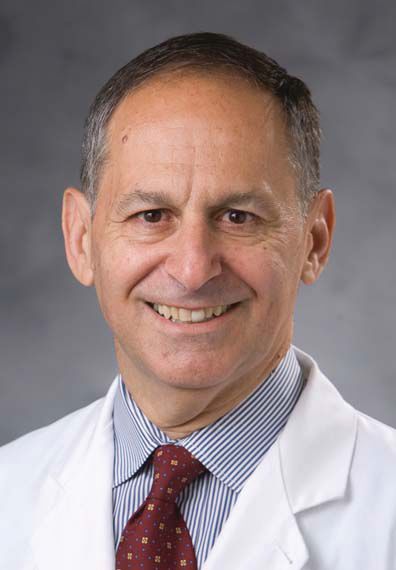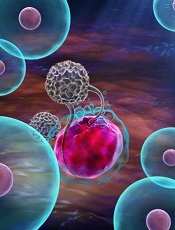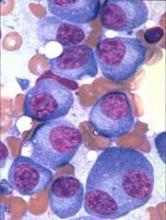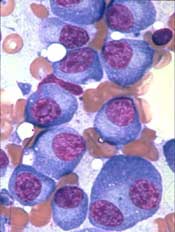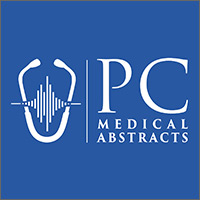User login
VIDEO: Parabens named ‘nonallergen’ of the year
SAN DIEGO – With propylene glycol already declared 2018 Allergen of the Year in a published journal article, the news at the Allergen of the Year session of the American Contact Dermatitis Society was announcement of the 2019 pick, parabens.
From a skin perspective, parabens are “perhaps the safest” preservative, but despite that they have a bad public reputation Donald V. Belsito, MD, said in his Allergen of the Year talk during the Society’s annual meeting held the day before the annual meeting of the American Academy of Dermatology.
There is an unfounded public perception that parabens cause endocrine disruption. Naming parabens the “nonallergen” of the year for 2019 is an effort to dispel this myth, Dr. Belsito said in a video interview.
The public prejudice against parabens, exacerbated by many products that tout being paraben free, has helped cause a crisis because preservative systems in general have been under attack and facing restrictions. Dr. Belsito cited European limitations on the preservative methylisothiazolinone (Allergen of the Year in 2013) and withdrawal of formaldehyde (2015 Allergen of the Year) from many products.
Dr. Belsito also highlighted why propylene glycol received the nod as 2018’s Allergen of the Year (Dermatitis. 2018 Jan/Feb;29[1]:3-5). Propylene glycol is a very ubiquitous emulsifier found in cosmetics, foods, and both topical and oral medications. Caution is needed when running a patch test on the agent to distinguish an irritation reaction from an allergic reaction. Interpreting the test result correctly is very important, said Dr. Belsito, professor of dermatology at Columbia University in New York.
Parabens is the 20th Allergen of the Year named by the Society, an annual event since 2000.
Dr. Belsito has participated in the program since its start.
SAN DIEGO – With propylene glycol already declared 2018 Allergen of the Year in a published journal article, the news at the Allergen of the Year session of the American Contact Dermatitis Society was announcement of the 2019 pick, parabens.
From a skin perspective, parabens are “perhaps the safest” preservative, but despite that they have a bad public reputation Donald V. Belsito, MD, said in his Allergen of the Year talk during the Society’s annual meeting held the day before the annual meeting of the American Academy of Dermatology.
There is an unfounded public perception that parabens cause endocrine disruption. Naming parabens the “nonallergen” of the year for 2019 is an effort to dispel this myth, Dr. Belsito said in a video interview.
The public prejudice against parabens, exacerbated by many products that tout being paraben free, has helped cause a crisis because preservative systems in general have been under attack and facing restrictions. Dr. Belsito cited European limitations on the preservative methylisothiazolinone (Allergen of the Year in 2013) and withdrawal of formaldehyde (2015 Allergen of the Year) from many products.
Dr. Belsito also highlighted why propylene glycol received the nod as 2018’s Allergen of the Year (Dermatitis. 2018 Jan/Feb;29[1]:3-5). Propylene glycol is a very ubiquitous emulsifier found in cosmetics, foods, and both topical and oral medications. Caution is needed when running a patch test on the agent to distinguish an irritation reaction from an allergic reaction. Interpreting the test result correctly is very important, said Dr. Belsito, professor of dermatology at Columbia University in New York.
Parabens is the 20th Allergen of the Year named by the Society, an annual event since 2000.
Dr. Belsito has participated in the program since its start.
SAN DIEGO – With propylene glycol already declared 2018 Allergen of the Year in a published journal article, the news at the Allergen of the Year session of the American Contact Dermatitis Society was announcement of the 2019 pick, parabens.
From a skin perspective, parabens are “perhaps the safest” preservative, but despite that they have a bad public reputation Donald V. Belsito, MD, said in his Allergen of the Year talk during the Society’s annual meeting held the day before the annual meeting of the American Academy of Dermatology.
There is an unfounded public perception that parabens cause endocrine disruption. Naming parabens the “nonallergen” of the year for 2019 is an effort to dispel this myth, Dr. Belsito said in a video interview.
The public prejudice against parabens, exacerbated by many products that tout being paraben free, has helped cause a crisis because preservative systems in general have been under attack and facing restrictions. Dr. Belsito cited European limitations on the preservative methylisothiazolinone (Allergen of the Year in 2013) and withdrawal of formaldehyde (2015 Allergen of the Year) from many products.
Dr. Belsito also highlighted why propylene glycol received the nod as 2018’s Allergen of the Year (Dermatitis. 2018 Jan/Feb;29[1]:3-5). Propylene glycol is a very ubiquitous emulsifier found in cosmetics, foods, and both topical and oral medications. Caution is needed when running a patch test on the agent to distinguish an irritation reaction from an allergic reaction. Interpreting the test result correctly is very important, said Dr. Belsito, professor of dermatology at Columbia University in New York.
Parabens is the 20th Allergen of the Year named by the Society, an annual event since 2000.
Dr. Belsito has participated in the program since its start.
FROM ACDS 18
Action to address gun violence is long overdue
On Feb. 14 in Parkland, Florida, 17 students and teachers were murdered in yet another school shooting. Yet another mass killing. More than a dozen others were injured and some are fighting for their lives under the care of physicians and nurses.
The pervasiveness of gun violence and the weapons used in these crimes have changed the way we live. In movie theaters, places of worship, offices, restaurants, night clubs and schools, people today make clear note of escape routes. Schools, including the one attacked yesterday, regularly practice for active shooter situations.
And in emergency departments and trauma centers, we struggle with much more complicated, dangerous injuries inflicted by lethal ammunition fired by military-grade weapons.
At the 2016 AMA Annual Meeting, which began the day after the deadly shooting at the Pulse Nightclub in Orlando, physicians from across the country and at every stage in their career spoke about treating gunshot victims and the scale of violence we are experiencing today. Their stories resonate as much today as they did nearly two years ago.
The shooting at Marjory Stoneman Douglas High School was the 30th mass shooting – a shooting in which four or more people are killed or injured – of 2018. It was also the 17th time a gun has been fired on the grounds of an American school this year. The problem is getting worse – the regularity of, and death from, mass shootings is increasing. With the shooting in Parkland, three of the 10 deadliest mass shootings in modern U.S. history have come in the past five months.
Time to act
Gun violence in America today is a public health crisis, one that requires a comprehensive and far-reaching solution. And that is not just my own sentiment; that is the determination of the AMA House of Delegates. With more than 30,000 American men, women and children dying from gun violence and firearm-related accidents each year, the time to act is now.
Today, more than ever before, America’s physicians must lend their voice and their considerable political muscle to force lawmakers to examine this urgent health crisis – through federally funded research – and take appropriate steps to address it. Let me be very clear about this. We are not talking about Second Amendment rights or restricting your ability to own a firearm.
We are talking about a public health crisis that our Congress has failed to address. This must end.
In the wake of the Sandy Hook shooting in 2012 – a massacre that left 20 first-graders and six adults dead – the AMA wrote to President Obama and to the leaders in the House and Senate. We expressed our sense of grief and sadness and offered our expertise and experience in finding workable, commonsense solutions to reduce the epidemic of gun violence – indeed the overall culture of violence – in America.
We noted that the relatively easy access to the increased firepower of assault weapons, semiautomatic firearms, high-capacity magazines, and high-velocity ammunition heightens the risk of multiple gunshot wounds and severe penetrating trauma, resulting in more critical injuries and deaths. Even for those who manage to survive gun violence involving these weapons, the severity and lasting impact of their wounds, disabilities and treatment leads to devastating consequences for the families affected and for society as a whole, contributing to high medical costs for treatment and recovery.
We called for renewing and strengthening the assault weapons ban, including banning high-capacity magazines, as a step in the right direction. We also called for more resources for safety education programs that promote more responsible use and storage of firearms, and noted that part of ensuring firearms safety means that physicians need to be able to have frank discussions with their patients and parents of patients about firearm safety issues and risks to help them safeguard their families from accidents.
We also urged the nation to strengthen its commitment and resources to comprehensive access to mental health services, including screening, prevention and treatment. While the overwhelming majority of patients with mental illness are not violent, physicians and other health professionals must be trained to respond to those who have a mental illness that might make them more prone to commit violence.
On an average day, more than 100 Americans die from gun violence and firearm-related accidents. In communities like yours – regardless of where you live or how safe it feels – people are losing their lives to this scourge.
For many Americans, gun violence used to be a distant idea relegated mostly to the nightly news, movies and faraway places. But today, in communities such as Parkland, it is horrifyingly real. The victims are our friends, neighbors and, unfathomably, our children.
As physicians, we have dedicated our lives to public health. And at the AMA, our mission is improving the health of the nation. That mission today must include determining the root causes of this epidemic and turning the tide on gun violence.
We must do more than pray for families who lost loved ones. It is time to act to prevent future deaths and injuries.
Dr. Barbe is president of the American Medical Association. His commentary originally was published on AMA Wire.
On Feb. 14 in Parkland, Florida, 17 students and teachers were murdered in yet another school shooting. Yet another mass killing. More than a dozen others were injured and some are fighting for their lives under the care of physicians and nurses.
The pervasiveness of gun violence and the weapons used in these crimes have changed the way we live. In movie theaters, places of worship, offices, restaurants, night clubs and schools, people today make clear note of escape routes. Schools, including the one attacked yesterday, regularly practice for active shooter situations.
And in emergency departments and trauma centers, we struggle with much more complicated, dangerous injuries inflicted by lethal ammunition fired by military-grade weapons.
At the 2016 AMA Annual Meeting, which began the day after the deadly shooting at the Pulse Nightclub in Orlando, physicians from across the country and at every stage in their career spoke about treating gunshot victims and the scale of violence we are experiencing today. Their stories resonate as much today as they did nearly two years ago.
The shooting at Marjory Stoneman Douglas High School was the 30th mass shooting – a shooting in which four or more people are killed or injured – of 2018. It was also the 17th time a gun has been fired on the grounds of an American school this year. The problem is getting worse – the regularity of, and death from, mass shootings is increasing. With the shooting in Parkland, three of the 10 deadliest mass shootings in modern U.S. history have come in the past five months.
Time to act
Gun violence in America today is a public health crisis, one that requires a comprehensive and far-reaching solution. And that is not just my own sentiment; that is the determination of the AMA House of Delegates. With more than 30,000 American men, women and children dying from gun violence and firearm-related accidents each year, the time to act is now.
Today, more than ever before, America’s physicians must lend their voice and their considerable political muscle to force lawmakers to examine this urgent health crisis – through federally funded research – and take appropriate steps to address it. Let me be very clear about this. We are not talking about Second Amendment rights or restricting your ability to own a firearm.
We are talking about a public health crisis that our Congress has failed to address. This must end.
In the wake of the Sandy Hook shooting in 2012 – a massacre that left 20 first-graders and six adults dead – the AMA wrote to President Obama and to the leaders in the House and Senate. We expressed our sense of grief and sadness and offered our expertise and experience in finding workable, commonsense solutions to reduce the epidemic of gun violence – indeed the overall culture of violence – in America.
We noted that the relatively easy access to the increased firepower of assault weapons, semiautomatic firearms, high-capacity magazines, and high-velocity ammunition heightens the risk of multiple gunshot wounds and severe penetrating trauma, resulting in more critical injuries and deaths. Even for those who manage to survive gun violence involving these weapons, the severity and lasting impact of their wounds, disabilities and treatment leads to devastating consequences for the families affected and for society as a whole, contributing to high medical costs for treatment and recovery.
We called for renewing and strengthening the assault weapons ban, including banning high-capacity magazines, as a step in the right direction. We also called for more resources for safety education programs that promote more responsible use and storage of firearms, and noted that part of ensuring firearms safety means that physicians need to be able to have frank discussions with their patients and parents of patients about firearm safety issues and risks to help them safeguard their families from accidents.
We also urged the nation to strengthen its commitment and resources to comprehensive access to mental health services, including screening, prevention and treatment. While the overwhelming majority of patients with mental illness are not violent, physicians and other health professionals must be trained to respond to those who have a mental illness that might make them more prone to commit violence.
On an average day, more than 100 Americans die from gun violence and firearm-related accidents. In communities like yours – regardless of where you live or how safe it feels – people are losing their lives to this scourge.
For many Americans, gun violence used to be a distant idea relegated mostly to the nightly news, movies and faraway places. But today, in communities such as Parkland, it is horrifyingly real. The victims are our friends, neighbors and, unfathomably, our children.
As physicians, we have dedicated our lives to public health. And at the AMA, our mission is improving the health of the nation. That mission today must include determining the root causes of this epidemic and turning the tide on gun violence.
We must do more than pray for families who lost loved ones. It is time to act to prevent future deaths and injuries.
Dr. Barbe is president of the American Medical Association. His commentary originally was published on AMA Wire.
On Feb. 14 in Parkland, Florida, 17 students and teachers were murdered in yet another school shooting. Yet another mass killing. More than a dozen others were injured and some are fighting for their lives under the care of physicians and nurses.
The pervasiveness of gun violence and the weapons used in these crimes have changed the way we live. In movie theaters, places of worship, offices, restaurants, night clubs and schools, people today make clear note of escape routes. Schools, including the one attacked yesterday, regularly practice for active shooter situations.
And in emergency departments and trauma centers, we struggle with much more complicated, dangerous injuries inflicted by lethal ammunition fired by military-grade weapons.
At the 2016 AMA Annual Meeting, which began the day after the deadly shooting at the Pulse Nightclub in Orlando, physicians from across the country and at every stage in their career spoke about treating gunshot victims and the scale of violence we are experiencing today. Their stories resonate as much today as they did nearly two years ago.
The shooting at Marjory Stoneman Douglas High School was the 30th mass shooting – a shooting in which four or more people are killed or injured – of 2018. It was also the 17th time a gun has been fired on the grounds of an American school this year. The problem is getting worse – the regularity of, and death from, mass shootings is increasing. With the shooting in Parkland, three of the 10 deadliest mass shootings in modern U.S. history have come in the past five months.
Time to act
Gun violence in America today is a public health crisis, one that requires a comprehensive and far-reaching solution. And that is not just my own sentiment; that is the determination of the AMA House of Delegates. With more than 30,000 American men, women and children dying from gun violence and firearm-related accidents each year, the time to act is now.
Today, more than ever before, America’s physicians must lend their voice and their considerable political muscle to force lawmakers to examine this urgent health crisis – through federally funded research – and take appropriate steps to address it. Let me be very clear about this. We are not talking about Second Amendment rights or restricting your ability to own a firearm.
We are talking about a public health crisis that our Congress has failed to address. This must end.
In the wake of the Sandy Hook shooting in 2012 – a massacre that left 20 first-graders and six adults dead – the AMA wrote to President Obama and to the leaders in the House and Senate. We expressed our sense of grief and sadness and offered our expertise and experience in finding workable, commonsense solutions to reduce the epidemic of gun violence – indeed the overall culture of violence – in America.
We noted that the relatively easy access to the increased firepower of assault weapons, semiautomatic firearms, high-capacity magazines, and high-velocity ammunition heightens the risk of multiple gunshot wounds and severe penetrating trauma, resulting in more critical injuries and deaths. Even for those who manage to survive gun violence involving these weapons, the severity and lasting impact of their wounds, disabilities and treatment leads to devastating consequences for the families affected and for society as a whole, contributing to high medical costs for treatment and recovery.
We called for renewing and strengthening the assault weapons ban, including banning high-capacity magazines, as a step in the right direction. We also called for more resources for safety education programs that promote more responsible use and storage of firearms, and noted that part of ensuring firearms safety means that physicians need to be able to have frank discussions with their patients and parents of patients about firearm safety issues and risks to help them safeguard their families from accidents.
We also urged the nation to strengthen its commitment and resources to comprehensive access to mental health services, including screening, prevention and treatment. While the overwhelming majority of patients with mental illness are not violent, physicians and other health professionals must be trained to respond to those who have a mental illness that might make them more prone to commit violence.
On an average day, more than 100 Americans die from gun violence and firearm-related accidents. In communities like yours – regardless of where you live or how safe it feels – people are losing their lives to this scourge.
For many Americans, gun violence used to be a distant idea relegated mostly to the nightly news, movies and faraway places. But today, in communities such as Parkland, it is horrifyingly real. The victims are our friends, neighbors and, unfathomably, our children.
As physicians, we have dedicated our lives to public health. And at the AMA, our mission is improving the health of the nation. That mission today must include determining the root causes of this epidemic and turning the tide on gun violence.
We must do more than pray for families who lost loved ones. It is time to act to prevent future deaths and injuries.
Dr. Barbe is president of the American Medical Association. His commentary originally was published on AMA Wire.
ANA assay results differ widely in established lupus patients
A new study that shows wide variation in the results of commercially-available assays used to detect antinuclear antibodies in people with established systemic lupus erythematosus has thrown into question the assays’ role in determining eligibility for trials as well as their role in clinical practice.
The study’s findings of negative results ranging from 5% to 22% of samples with three different commercially available immunofluorescence assays (IFAs), one ELISA assay, and one bead-based multiplex assay reveal that “ANA negativity can occur in established lupus not infrequently [and] the use of certain ANA assays could affect the frequency of screen failures in the trial setting as well as the eventual utilization of an agent if approved for serologically active patients,” David S. Pisetsky, MD, PhD, of Duke University, Durham, N.C., and his associates wrote in their report published in Annals of the Rheumatic Diseases.
People with systemic lupus erythematosus (SLE) have been thought to be “almost invariably” ANA positive, leaving the usual performance of testing to initial evaluation but not later unless a patient seeks care from another provider or undergoes screening to determine eligibility for entry into clinical trials of new therapeutic agents even though existing assays are not validated for this purpose. This practice first began with the development of the monoclonal antibody belimumab (Benlysta). Phase 2 trials showed that patients who were serologically positive (ANA and/or anti-DNA) were more likely to respond to the agent. Phase 3 trials that followed enrolled only serological positive patients and met their endpoints, the investigators explained.
“In view of the increasing use of ANA for determining trial eligibility, an explanation of these observations is important since it can impact both trial enrollment and eventual utilization of a product approved for autoantibody positive patients,” they wrote.
The research team assessed sera from 103 SLE patients using three different IFAs, an ELISA assay, and a bead-based multiplex assay. Results showed that the frequency of ANA positivity varied markedly depending on the assay platform and kit used. Among the IFA kits, negative results varied from 5 to 23 of 103 samples (4.9%-22.3%), although some samples had indeterminate results. Negative results occurred in 12 (11.7%) of the ELISA samples and in 14 (13.6%) of the multiplex assay samples.
Patients who consistently tested ANA positive in all assays differed from those who had discordant results among assays based on their likelihood of historical anti-double stranded DNA positivity and low levels of C3 complement.
This difference may have implications for the use of assays to determine eligibility for entry into a trial, the investigators noted. They advised that clinical trial protocols should specify which kits can be used to determine eligibility and how they characteristically perform, particularly for patients with established disease.
“Since the ANA assay used for screening is often not specified in protocols, the selection of a kit could lead to as much as a 17% change in the number of screen failures,” they speculated. “Correspondingly, for products approved for serologically active SLE, the use of certain assays could determine whether a patient meets criteria for its use.”
Future studies are needed to identify the assays that are most informative as theranostic biomarkers. Questions also remain over whether ANA positivity should be a criterion for trial entry in people with SLE of long duration, and if people with seronegative disease should be studied separately, they added.
The Lupus Industry Council supported the study. No authors had conflicts of interest to declare.
SOURCE: Pisetsky D et al. Ann Rheum Dis. 2018 Feb 9. doi: 10.1136/annrheumdis-2017-212599
A new study that shows wide variation in the results of commercially-available assays used to detect antinuclear antibodies in people with established systemic lupus erythematosus has thrown into question the assays’ role in determining eligibility for trials as well as their role in clinical practice.
The study’s findings of negative results ranging from 5% to 22% of samples with three different commercially available immunofluorescence assays (IFAs), one ELISA assay, and one bead-based multiplex assay reveal that “ANA negativity can occur in established lupus not infrequently [and] the use of certain ANA assays could affect the frequency of screen failures in the trial setting as well as the eventual utilization of an agent if approved for serologically active patients,” David S. Pisetsky, MD, PhD, of Duke University, Durham, N.C., and his associates wrote in their report published in Annals of the Rheumatic Diseases.
People with systemic lupus erythematosus (SLE) have been thought to be “almost invariably” ANA positive, leaving the usual performance of testing to initial evaluation but not later unless a patient seeks care from another provider or undergoes screening to determine eligibility for entry into clinical trials of new therapeutic agents even though existing assays are not validated for this purpose. This practice first began with the development of the monoclonal antibody belimumab (Benlysta). Phase 2 trials showed that patients who were serologically positive (ANA and/or anti-DNA) were more likely to respond to the agent. Phase 3 trials that followed enrolled only serological positive patients and met their endpoints, the investigators explained.
“In view of the increasing use of ANA for determining trial eligibility, an explanation of these observations is important since it can impact both trial enrollment and eventual utilization of a product approved for autoantibody positive patients,” they wrote.
The research team assessed sera from 103 SLE patients using three different IFAs, an ELISA assay, and a bead-based multiplex assay. Results showed that the frequency of ANA positivity varied markedly depending on the assay platform and kit used. Among the IFA kits, negative results varied from 5 to 23 of 103 samples (4.9%-22.3%), although some samples had indeterminate results. Negative results occurred in 12 (11.7%) of the ELISA samples and in 14 (13.6%) of the multiplex assay samples.
Patients who consistently tested ANA positive in all assays differed from those who had discordant results among assays based on their likelihood of historical anti-double stranded DNA positivity and low levels of C3 complement.
This difference may have implications for the use of assays to determine eligibility for entry into a trial, the investigators noted. They advised that clinical trial protocols should specify which kits can be used to determine eligibility and how they characteristically perform, particularly for patients with established disease.
“Since the ANA assay used for screening is often not specified in protocols, the selection of a kit could lead to as much as a 17% change in the number of screen failures,” they speculated. “Correspondingly, for products approved for serologically active SLE, the use of certain assays could determine whether a patient meets criteria for its use.”
Future studies are needed to identify the assays that are most informative as theranostic biomarkers. Questions also remain over whether ANA positivity should be a criterion for trial entry in people with SLE of long duration, and if people with seronegative disease should be studied separately, they added.
The Lupus Industry Council supported the study. No authors had conflicts of interest to declare.
SOURCE: Pisetsky D et al. Ann Rheum Dis. 2018 Feb 9. doi: 10.1136/annrheumdis-2017-212599
A new study that shows wide variation in the results of commercially-available assays used to detect antinuclear antibodies in people with established systemic lupus erythematosus has thrown into question the assays’ role in determining eligibility for trials as well as their role in clinical practice.
The study’s findings of negative results ranging from 5% to 22% of samples with three different commercially available immunofluorescence assays (IFAs), one ELISA assay, and one bead-based multiplex assay reveal that “ANA negativity can occur in established lupus not infrequently [and] the use of certain ANA assays could affect the frequency of screen failures in the trial setting as well as the eventual utilization of an agent if approved for serologically active patients,” David S. Pisetsky, MD, PhD, of Duke University, Durham, N.C., and his associates wrote in their report published in Annals of the Rheumatic Diseases.
People with systemic lupus erythematosus (SLE) have been thought to be “almost invariably” ANA positive, leaving the usual performance of testing to initial evaluation but not later unless a patient seeks care from another provider or undergoes screening to determine eligibility for entry into clinical trials of new therapeutic agents even though existing assays are not validated for this purpose. This practice first began with the development of the monoclonal antibody belimumab (Benlysta). Phase 2 trials showed that patients who were serologically positive (ANA and/or anti-DNA) were more likely to respond to the agent. Phase 3 trials that followed enrolled only serological positive patients and met their endpoints, the investigators explained.
“In view of the increasing use of ANA for determining trial eligibility, an explanation of these observations is important since it can impact both trial enrollment and eventual utilization of a product approved for autoantibody positive patients,” they wrote.
The research team assessed sera from 103 SLE patients using three different IFAs, an ELISA assay, and a bead-based multiplex assay. Results showed that the frequency of ANA positivity varied markedly depending on the assay platform and kit used. Among the IFA kits, negative results varied from 5 to 23 of 103 samples (4.9%-22.3%), although some samples had indeterminate results. Negative results occurred in 12 (11.7%) of the ELISA samples and in 14 (13.6%) of the multiplex assay samples.
Patients who consistently tested ANA positive in all assays differed from those who had discordant results among assays based on their likelihood of historical anti-double stranded DNA positivity and low levels of C3 complement.
This difference may have implications for the use of assays to determine eligibility for entry into a trial, the investigators noted. They advised that clinical trial protocols should specify which kits can be used to determine eligibility and how they characteristically perform, particularly for patients with established disease.
“Since the ANA assay used for screening is often not specified in protocols, the selection of a kit could lead to as much as a 17% change in the number of screen failures,” they speculated. “Correspondingly, for products approved for serologically active SLE, the use of certain assays could determine whether a patient meets criteria for its use.”
Future studies are needed to identify the assays that are most informative as theranostic biomarkers. Questions also remain over whether ANA positivity should be a criterion for trial entry in people with SLE of long duration, and if people with seronegative disease should be studied separately, they added.
The Lupus Industry Council supported the study. No authors had conflicts of interest to declare.
SOURCE: Pisetsky D et al. Ann Rheum Dis. 2018 Feb 9. doi: 10.1136/annrheumdis-2017-212599
FROM ANNALS OF THE RHEUMATIC DISEASES
Key clinical point:
Main finding: ANA negativity varied from 5% to 22% of sera samples from 103 SLE patients with established disease.
Data source: Sera from 103 SLE patients were assessed using three different commercially available immunofluorescence assays, one ELISA assay, and one bead-based multiplex assay.
Disclosures: The Lupus Industry Council supported the study. No authors had conflicts of interest to declare.
Source: Pisetsky D et al. Ann Rheum Dis. 2018 Feb 9. doi: 10.1136/annrheumdis-2017-212599.
MDedge Daily News: The U.S. has a major depression problem
The video associated with this article is no longer available on this site. Please view all of our videos on the MDedge YouTube channel
The U.S. has a major depression problem, When to suggest fecal transplants in your C. difficile patients, treat-to-target works in real-world rheumatoid arthritis, and the HHS secretary squirms on the opioid hot seat.
Listen to the MDedge Daily News podcast for all the details on today’s top news.
The video associated with this article is no longer available on this site. Please view all of our videos on the MDedge YouTube channel
The U.S. has a major depression problem, When to suggest fecal transplants in your C. difficile patients, treat-to-target works in real-world rheumatoid arthritis, and the HHS secretary squirms on the opioid hot seat.
Listen to the MDedge Daily News podcast for all the details on today’s top news.
The video associated with this article is no longer available on this site. Please view all of our videos on the MDedge YouTube channel
The U.S. has a major depression problem, When to suggest fecal transplants in your C. difficile patients, treat-to-target works in real-world rheumatoid arthritis, and the HHS secretary squirms on the opioid hot seat.
Listen to the MDedge Daily News podcast for all the details on today’s top news.
Helping Veterans Stop Smoking
Three in 10 U.S. veterans used some form of tobacco during 2010-2015—a higher number than among nonveterans across all age groups except men aged ≥ 50 years, according to a CDC analysis of data from the National Survey on Drug Use and Health. More than one-third of the veterans surveyed started smoking after enlisting.
The analysis also found that > 60% of the veterans who used tobacco products had no health insurance, more than half were living in poverty, and 48% reported serious psychological distress.
The toll is significant not only for the smokers and their families, but also for the health care system. The researchers estimate that during 2010, VHA spent nearly $3 billion on smoking-related ambulatory care, prescription drugs, hospitalization, and home health care.
“VA has more tobacco use treatment options available than ever,” said Kim Hamlett-Berry, PhD, program director of VA Tobacco and Health Policy, and that has led to declines in rates of smoking. She notes that the 2015 VA Survey of Enrollees reported that 16.8% of veterans enrolled for health care in VA identified as a current smoker.
In addition to the quit lines already available (800-QUIT-VET, 800-QUIT-NOW, and https://smokefree.gov/VET), veterans can access quit services through TRICARE. VA treatment centers also have integrated smoking cessation programs into treatment for PTSD and other disorders. Smokers with psychiatric illness are more likely to die of smoking-related diseases than of complications from their mental illness or substance use disorders, Hamlett-Berry said at an American Psychological Association conference in 2013. She added that people with alcohol dependence and other substance use disorders smoke at higher rates. Research shows that combining smoking cessation with substance use treatment increase patients’ likelihood of success.
The CDC says more can be done. Strategies could include promoting cessation to current military personnel and veterans, implementing tobacco-free policies at military installations and VA medical centers and clinics, increasing the age requirement to buy tobacco on military bases to 21, and eliminating tobacco product discounts through military retailers.
Three in 10 U.S. veterans used some form of tobacco during 2010-2015—a higher number than among nonveterans across all age groups except men aged ≥ 50 years, according to a CDC analysis of data from the National Survey on Drug Use and Health. More than one-third of the veterans surveyed started smoking after enlisting.
The analysis also found that > 60% of the veterans who used tobacco products had no health insurance, more than half were living in poverty, and 48% reported serious psychological distress.
The toll is significant not only for the smokers and their families, but also for the health care system. The researchers estimate that during 2010, VHA spent nearly $3 billion on smoking-related ambulatory care, prescription drugs, hospitalization, and home health care.
“VA has more tobacco use treatment options available than ever,” said Kim Hamlett-Berry, PhD, program director of VA Tobacco and Health Policy, and that has led to declines in rates of smoking. She notes that the 2015 VA Survey of Enrollees reported that 16.8% of veterans enrolled for health care in VA identified as a current smoker.
In addition to the quit lines already available (800-QUIT-VET, 800-QUIT-NOW, and https://smokefree.gov/VET), veterans can access quit services through TRICARE. VA treatment centers also have integrated smoking cessation programs into treatment for PTSD and other disorders. Smokers with psychiatric illness are more likely to die of smoking-related diseases than of complications from their mental illness or substance use disorders, Hamlett-Berry said at an American Psychological Association conference in 2013. She added that people with alcohol dependence and other substance use disorders smoke at higher rates. Research shows that combining smoking cessation with substance use treatment increase patients’ likelihood of success.
The CDC says more can be done. Strategies could include promoting cessation to current military personnel and veterans, implementing tobacco-free policies at military installations and VA medical centers and clinics, increasing the age requirement to buy tobacco on military bases to 21, and eliminating tobacco product discounts through military retailers.
Three in 10 U.S. veterans used some form of tobacco during 2010-2015—a higher number than among nonveterans across all age groups except men aged ≥ 50 years, according to a CDC analysis of data from the National Survey on Drug Use and Health. More than one-third of the veterans surveyed started smoking after enlisting.
The analysis also found that > 60% of the veterans who used tobacco products had no health insurance, more than half were living in poverty, and 48% reported serious psychological distress.
The toll is significant not only for the smokers and their families, but also for the health care system. The researchers estimate that during 2010, VHA spent nearly $3 billion on smoking-related ambulatory care, prescription drugs, hospitalization, and home health care.
“VA has more tobacco use treatment options available than ever,” said Kim Hamlett-Berry, PhD, program director of VA Tobacco and Health Policy, and that has led to declines in rates of smoking. She notes that the 2015 VA Survey of Enrollees reported that 16.8% of veterans enrolled for health care in VA identified as a current smoker.
In addition to the quit lines already available (800-QUIT-VET, 800-QUIT-NOW, and https://smokefree.gov/VET), veterans can access quit services through TRICARE. VA treatment centers also have integrated smoking cessation programs into treatment for PTSD and other disorders. Smokers with psychiatric illness are more likely to die of smoking-related diseases than of complications from their mental illness or substance use disorders, Hamlett-Berry said at an American Psychological Association conference in 2013. She added that people with alcohol dependence and other substance use disorders smoke at higher rates. Research shows that combining smoking cessation with substance use treatment increase patients’ likelihood of success.
The CDC says more can be done. Strategies could include promoting cessation to current military personnel and veterans, implementing tobacco-free policies at military installations and VA medical centers and clinics, increasing the age requirement to buy tobacco on military bases to 21, and eliminating tobacco product discounts through military retailers.
Postpartum Psychosis in a Young VA Patient (Quiz)
Postpartum psychosis is identified in 1 to 2 per 1,000 childbirths. In women who have had an earlier episode of postpartum psychosis or have a diagnosis of bipolar disorder, the rate is up to 100 times higher.1 Kendell and colleagues found that psychiatric admissions occurred at a rate 7 times higher in the 30 days after birth than in the prepregnancy period, suggesting that metabolic factors might be involved in triggering postpartum psychotic symptoms.12 An abrupt hormonal loss occurs at childbirth; hormones peak 200-fold during gestation and decline rapidly within a day after birth.9 Despite the severity of symptoms in postpartum psychosis, these patients tend to have a better prognosis than that of women with psychotic episodes not related to pregnancy.4
Click here to read the full article
Postpartum psychosis is identified in 1 to 2 per 1,000 childbirths. In women who have had an earlier episode of postpartum psychosis or have a diagnosis of bipolar disorder, the rate is up to 100 times higher.1 Kendell and colleagues found that psychiatric admissions occurred at a rate 7 times higher in the 30 days after birth than in the prepregnancy period, suggesting that metabolic factors might be involved in triggering postpartum psychotic symptoms.12 An abrupt hormonal loss occurs at childbirth; hormones peak 200-fold during gestation and decline rapidly within a day after birth.9 Despite the severity of symptoms in postpartum psychosis, these patients tend to have a better prognosis than that of women with psychotic episodes not related to pregnancy.4
Click here to read the full article
Postpartum psychosis is identified in 1 to 2 per 1,000 childbirths. In women who have had an earlier episode of postpartum psychosis or have a diagnosis of bipolar disorder, the rate is up to 100 times higher.1 Kendell and colleagues found that psychiatric admissions occurred at a rate 7 times higher in the 30 days after birth than in the prepregnancy period, suggesting that metabolic factors might be involved in triggering postpartum psychotic symptoms.12 An abrupt hormonal loss occurs at childbirth; hormones peak 200-fold during gestation and decline rapidly within a day after birth.9 Despite the severity of symptoms in postpartum psychosis, these patients tend to have a better prognosis than that of women with psychotic episodes not related to pregnancy.4
Click here to read the full article
Postpartum psychosis can present with a prodromal phase consisting of fatigue, insomnia, restlessness, tearfulness, and emotional lability, making early identification difficult. Later, florid psychotic symptoms can include suspiciousness, confusion, incoherence, irrational statements, obsessive concern about the infant’s health, and delusions, including a belief that the baby is dead or defective. Some women might deny that the birth occurred or feel that they are unmarried, virginal, or persecuted.1 More concerning symptoms include auditory hallucinations commanding the mother to harm or kill the infant and/or herself. Symptoms often begin within days to weeks of birth, usually 2 to 3 weeks after delivery but can occur as long as 8 weeks postpartum.1 Several cases of infanticide and suicide have been documented.1 The risk of experiencing another psychotic episode in subsequent pregnancies can be as high as 50%.4-6 Regardless of symptom severity at onset, postpartum psychosis is a psychiatric emergency and must be treated as such.
NK-cell therapy in resistant MDS, AML
Results of a phase 1/2 trial suggest treatment with haploidentical natural killer (NK) cells can be effective against relapsed/refractory myelodysplastic syndromes (MDS) and acute myeloid leukemia (AML).
NK-cell therapy elicited responses in 6 of the 16 patients studied and provided a bridge to transplant for 5 patients.
Three responders were still alive at more than 3 years of follow-up.
There were 4 grade 3 adverse events (AEs) and 2 grade 5 AEs considered possibly or probably related to NK-cell therapy.
Investigators reported these results in Clinical Cancer Research.
The trial enrolled 16 patients. Eight had MDS/AML, 3 had de novo AML, and 5 had high-risk MDS, including refractory anemia with excess blasts (RAEB) type 1 progressing toward type 2, RAEB-2, and chronic myelomonocytic leukemia type 2.
The patients’ median age was 64 (range, 40-70), and they had received a median of 3 prior therapies (range, 1-6). Six patients had received an allogeneic hematopoietic stem cell transplant (HSCT).
For this study, all patients received fludarabine, cyclophosphamide, and total lymphoid irradiation prior to receiving haploidentical NK cells.
The median follow-up was 8 months for all patients and 28 months for responders.
Efficacy
Six patients responded to treatment. One patient with de novo AML had a complete response (CR). Two high-risk MDS patients had a marrow CR (mCR), as did 2 MDS/AML patients. One MDS/AML patient had a partial response (PR).
Two patients had stable disease (SD)—1 with MDS and 1 with MDS/AML. One patient with de novo AML had a morphologic leukemia-free state after NK-cell therapy.
Five patients proceeded to HSCT—3 in mCR, 1 in PR, and 1 with SD.
Three patients were still alive at last follow-up—1 with MDS who achieved an mCR and went on to HSCT, 1 with MDS/AML who achieved an mCR and went on to HSCT, and 1 with MDS/AML who achieved an mCR and went on to receive chemotherapy and donor lymphocyte infusion.
One survivor has more than 5 years of follow-up (the MDS patient), and the other 2 have more than 3 years of follow-up.
“Our study shows that patients with MDS, AML, and MDS/AML can be treated with NK cell-based immunotherapy and that the therapy can be highly efficacious,” said study author Hans-Gustaf Ljunggren, MD, PhD, of Karolinska Institutet in Stockholm, Sweden.
Safety
The most common AEs of any grade considered possibly or probably related to NK-cell therapy were chills (n=13) and nausea (n=4).
Two patients had cytokine release syndrome (CRS) likely associated with hemophagocytic lymphohistiocytosis (HLH).
Each of the following potentially related AEs were reported once: headache, vomiting, encephalitis infection, sinus tachycardia, bone pain, pain in extremity, and maculopapular rash.
There were 4 grade 3 AEs—CRS/HLH (n=1), chills (n=1), and nausea (n=2)—but no grade 4 AEs.
There were 2 grade 5 AEs—CRS/HLH and encephalitis infection. These occurred in a single patient who died with HLH, human herpes virus-6 encephalitis, and AML relapse.
Two investigators involved in this study serve on the scientific advisory board of Fate Therapeutics. Dr Ljunggren serves on the scientific advisory board of CellProtect, Nordic Pharmaceuticals, and HOPE Bio-Sciences. He is also on the board of directors of Vycellix and is a collaborator with Fate Therapeutics.
Results of a phase 1/2 trial suggest treatment with haploidentical natural killer (NK) cells can be effective against relapsed/refractory myelodysplastic syndromes (MDS) and acute myeloid leukemia (AML).
NK-cell therapy elicited responses in 6 of the 16 patients studied and provided a bridge to transplant for 5 patients.
Three responders were still alive at more than 3 years of follow-up.
There were 4 grade 3 adverse events (AEs) and 2 grade 5 AEs considered possibly or probably related to NK-cell therapy.
Investigators reported these results in Clinical Cancer Research.
The trial enrolled 16 patients. Eight had MDS/AML, 3 had de novo AML, and 5 had high-risk MDS, including refractory anemia with excess blasts (RAEB) type 1 progressing toward type 2, RAEB-2, and chronic myelomonocytic leukemia type 2.
The patients’ median age was 64 (range, 40-70), and they had received a median of 3 prior therapies (range, 1-6). Six patients had received an allogeneic hematopoietic stem cell transplant (HSCT).
For this study, all patients received fludarabine, cyclophosphamide, and total lymphoid irradiation prior to receiving haploidentical NK cells.
The median follow-up was 8 months for all patients and 28 months for responders.
Efficacy
Six patients responded to treatment. One patient with de novo AML had a complete response (CR). Two high-risk MDS patients had a marrow CR (mCR), as did 2 MDS/AML patients. One MDS/AML patient had a partial response (PR).
Two patients had stable disease (SD)—1 with MDS and 1 with MDS/AML. One patient with de novo AML had a morphologic leukemia-free state after NK-cell therapy.
Five patients proceeded to HSCT—3 in mCR, 1 in PR, and 1 with SD.
Three patients were still alive at last follow-up—1 with MDS who achieved an mCR and went on to HSCT, 1 with MDS/AML who achieved an mCR and went on to HSCT, and 1 with MDS/AML who achieved an mCR and went on to receive chemotherapy and donor lymphocyte infusion.
One survivor has more than 5 years of follow-up (the MDS patient), and the other 2 have more than 3 years of follow-up.
“Our study shows that patients with MDS, AML, and MDS/AML can be treated with NK cell-based immunotherapy and that the therapy can be highly efficacious,” said study author Hans-Gustaf Ljunggren, MD, PhD, of Karolinska Institutet in Stockholm, Sweden.
Safety
The most common AEs of any grade considered possibly or probably related to NK-cell therapy were chills (n=13) and nausea (n=4).
Two patients had cytokine release syndrome (CRS) likely associated with hemophagocytic lymphohistiocytosis (HLH).
Each of the following potentially related AEs were reported once: headache, vomiting, encephalitis infection, sinus tachycardia, bone pain, pain in extremity, and maculopapular rash.
There were 4 grade 3 AEs—CRS/HLH (n=1), chills (n=1), and nausea (n=2)—but no grade 4 AEs.
There were 2 grade 5 AEs—CRS/HLH and encephalitis infection. These occurred in a single patient who died with HLH, human herpes virus-6 encephalitis, and AML relapse.
Two investigators involved in this study serve on the scientific advisory board of Fate Therapeutics. Dr Ljunggren serves on the scientific advisory board of CellProtect, Nordic Pharmaceuticals, and HOPE Bio-Sciences. He is also on the board of directors of Vycellix and is a collaborator with Fate Therapeutics.
Results of a phase 1/2 trial suggest treatment with haploidentical natural killer (NK) cells can be effective against relapsed/refractory myelodysplastic syndromes (MDS) and acute myeloid leukemia (AML).
NK-cell therapy elicited responses in 6 of the 16 patients studied and provided a bridge to transplant for 5 patients.
Three responders were still alive at more than 3 years of follow-up.
There were 4 grade 3 adverse events (AEs) and 2 grade 5 AEs considered possibly or probably related to NK-cell therapy.
Investigators reported these results in Clinical Cancer Research.
The trial enrolled 16 patients. Eight had MDS/AML, 3 had de novo AML, and 5 had high-risk MDS, including refractory anemia with excess blasts (RAEB) type 1 progressing toward type 2, RAEB-2, and chronic myelomonocytic leukemia type 2.
The patients’ median age was 64 (range, 40-70), and they had received a median of 3 prior therapies (range, 1-6). Six patients had received an allogeneic hematopoietic stem cell transplant (HSCT).
For this study, all patients received fludarabine, cyclophosphamide, and total lymphoid irradiation prior to receiving haploidentical NK cells.
The median follow-up was 8 months for all patients and 28 months for responders.
Efficacy
Six patients responded to treatment. One patient with de novo AML had a complete response (CR). Two high-risk MDS patients had a marrow CR (mCR), as did 2 MDS/AML patients. One MDS/AML patient had a partial response (PR).
Two patients had stable disease (SD)—1 with MDS and 1 with MDS/AML. One patient with de novo AML had a morphologic leukemia-free state after NK-cell therapy.
Five patients proceeded to HSCT—3 in mCR, 1 in PR, and 1 with SD.
Three patients were still alive at last follow-up—1 with MDS who achieved an mCR and went on to HSCT, 1 with MDS/AML who achieved an mCR and went on to HSCT, and 1 with MDS/AML who achieved an mCR and went on to receive chemotherapy and donor lymphocyte infusion.
One survivor has more than 5 years of follow-up (the MDS patient), and the other 2 have more than 3 years of follow-up.
“Our study shows that patients with MDS, AML, and MDS/AML can be treated with NK cell-based immunotherapy and that the therapy can be highly efficacious,” said study author Hans-Gustaf Ljunggren, MD, PhD, of Karolinska Institutet in Stockholm, Sweden.
Safety
The most common AEs of any grade considered possibly or probably related to NK-cell therapy were chills (n=13) and nausea (n=4).
Two patients had cytokine release syndrome (CRS) likely associated with hemophagocytic lymphohistiocytosis (HLH).
Each of the following potentially related AEs were reported once: headache, vomiting, encephalitis infection, sinus tachycardia, bone pain, pain in extremity, and maculopapular rash.
There were 4 grade 3 AEs—CRS/HLH (n=1), chills (n=1), and nausea (n=2)—but no grade 4 AEs.
There were 2 grade 5 AEs—CRS/HLH and encephalitis infection. These occurred in a single patient who died with HLH, human herpes virus-6 encephalitis, and AML relapse.
Two investigators involved in this study serve on the scientific advisory board of Fate Therapeutics. Dr Ljunggren serves on the scientific advisory board of CellProtect, Nordic Pharmaceuticals, and HOPE Bio-Sciences. He is also on the board of directors of Vycellix and is a collaborator with Fate Therapeutics.
Team creates device to study hemostasis
Researchers have engineered a miniature model system for studying hemostasis.
They believe the device could serve as a drug discovery platform and potential diagnostic tool.
The team has already used the device to assess the effects of an antiplatelet agent and analyze blood from hemophilia A patients.
The researchers described this work in Nature Communications.
The team noted that hemostasis encompasses the interactions of platelets, coagulation factors, blood cells, endothelium, and hemodynamic forces.
“Current methods to study blood clotting require isolation of each of these components, which prevents us from seeing the big picture of what’s going with the patient’s blood clotting system,” said study author Wilbur Lam, MD, PhD, of Georgia Institute of Technology and Emory University in Atlanta, Georgia.
With this in mind, Dr Lam and his colleagues developed their device.
They believe it is the first system to reproduce all aspects of blood vessel injury seen in the microvasculature—blood loss due to trauma, clot formation by whole blood, and repair of the blood vessel lining. However, it does not reproduce aspects of larger blood vessels.
The researchers’ device has 3 layers. The top “vascular” layer consists of human endothelial cells cultured in a microchannel. The middle valve layer consists of a polydimethylsiloxane membrane, and the bottom is a “valve actuator” layer.
To assess hemostatic response, the researchers create a “wound” in this system. They exert both positive and negative pressure to create an opening about 130 micrometers across. Donated human blood can flow through this opening for testing.
The researchers said they used this system to demonstrate the importance of von Willebrand factor and endothelial phosphatidylserine in hemostasis.
The team used the device to test the antiplatelet agent eptifibatide as well. They found the drug leads to decreased clot contraction and a lower density of platelets within the hemostatic plug.
Finally, the researchers analyzed blood from hemophilia A patients and found that it “confers unstable hemostatic plug formation and altered fibrin architecture.”
Researchers have engineered a miniature model system for studying hemostasis.
They believe the device could serve as a drug discovery platform and potential diagnostic tool.
The team has already used the device to assess the effects of an antiplatelet agent and analyze blood from hemophilia A patients.
The researchers described this work in Nature Communications.
The team noted that hemostasis encompasses the interactions of platelets, coagulation factors, blood cells, endothelium, and hemodynamic forces.
“Current methods to study blood clotting require isolation of each of these components, which prevents us from seeing the big picture of what’s going with the patient’s blood clotting system,” said study author Wilbur Lam, MD, PhD, of Georgia Institute of Technology and Emory University in Atlanta, Georgia.
With this in mind, Dr Lam and his colleagues developed their device.
They believe it is the first system to reproduce all aspects of blood vessel injury seen in the microvasculature—blood loss due to trauma, clot formation by whole blood, and repair of the blood vessel lining. However, it does not reproduce aspects of larger blood vessels.
The researchers’ device has 3 layers. The top “vascular” layer consists of human endothelial cells cultured in a microchannel. The middle valve layer consists of a polydimethylsiloxane membrane, and the bottom is a “valve actuator” layer.
To assess hemostatic response, the researchers create a “wound” in this system. They exert both positive and negative pressure to create an opening about 130 micrometers across. Donated human blood can flow through this opening for testing.
The researchers said they used this system to demonstrate the importance of von Willebrand factor and endothelial phosphatidylserine in hemostasis.
The team used the device to test the antiplatelet agent eptifibatide as well. They found the drug leads to decreased clot contraction and a lower density of platelets within the hemostatic plug.
Finally, the researchers analyzed blood from hemophilia A patients and found that it “confers unstable hemostatic plug formation and altered fibrin architecture.”
Researchers have engineered a miniature model system for studying hemostasis.
They believe the device could serve as a drug discovery platform and potential diagnostic tool.
The team has already used the device to assess the effects of an antiplatelet agent and analyze blood from hemophilia A patients.
The researchers described this work in Nature Communications.
The team noted that hemostasis encompasses the interactions of platelets, coagulation factors, blood cells, endothelium, and hemodynamic forces.
“Current methods to study blood clotting require isolation of each of these components, which prevents us from seeing the big picture of what’s going with the patient’s blood clotting system,” said study author Wilbur Lam, MD, PhD, of Georgia Institute of Technology and Emory University in Atlanta, Georgia.
With this in mind, Dr Lam and his colleagues developed their device.
They believe it is the first system to reproduce all aspects of blood vessel injury seen in the microvasculature—blood loss due to trauma, clot formation by whole blood, and repair of the blood vessel lining. However, it does not reproduce aspects of larger blood vessels.
The researchers’ device has 3 layers. The top “vascular” layer consists of human endothelial cells cultured in a microchannel. The middle valve layer consists of a polydimethylsiloxane membrane, and the bottom is a “valve actuator” layer.
To assess hemostatic response, the researchers create a “wound” in this system. They exert both positive and negative pressure to create an opening about 130 micrometers across. Donated human blood can flow through this opening for testing.
The researchers said they used this system to demonstrate the importance of von Willebrand factor and endothelial phosphatidylserine in hemostasis.
The team used the device to test the antiplatelet agent eptifibatide as well. They found the drug leads to decreased clot contraction and a lower density of platelets within the hemostatic plug.
Finally, the researchers analyzed blood from hemophilia A patients and found that it “confers unstable hemostatic plug formation and altered fibrin architecture.”
Drug receives orphan designation for MM
The US Food and Drug Administration (FDA) has granted orphan designation to PT-112 as a treatment for multiple myeloma (MM).
PT-112 is a small-molecule conjugate of pyrophosphate and platinum that promotes apoptosis with damage-associated molecular patterns, leading to downstream T-cell recruitment in the tumor microenvironment.
PT-112 is currently under investigation in a phase 1/2 study of patients with relapsed or refractory MM (NCT03288480).
Phosplatin Therapeutics LLC, the company developing PT-112, has enrolled the first cohort of patients in this trial.
In preclinical experiments, PT-112 demonstrated synergy with lenalidomide and bortezomib in RPMI-8226 cells and dexamethasone-resistant MM1R cells.
Single-agent PT-112 produced responses in mice with established MM. Researchers said PT-112 had “pronounced” activity against bortezomib-refractory Vk12598 tumors, which significantly improved overall survival in the mice.
This research was presented at the 2017 ASH Annual Meeting (abstract 1797).
About orphan designation
The FDA grants orphan designation to products intended to treat, diagnose, or prevent diseases/disorders that affect fewer than 200,000 people in the US.
The designation provides incentives for sponsors to develop products for rare diseases. This may include tax credits toward the cost of clinical trials, prescription drug user fee waivers, and 7 years of market exclusivity if the product is approved.
The US Food and Drug Administration (FDA) has granted orphan designation to PT-112 as a treatment for multiple myeloma (MM).
PT-112 is a small-molecule conjugate of pyrophosphate and platinum that promotes apoptosis with damage-associated molecular patterns, leading to downstream T-cell recruitment in the tumor microenvironment.
PT-112 is currently under investigation in a phase 1/2 study of patients with relapsed or refractory MM (NCT03288480).
Phosplatin Therapeutics LLC, the company developing PT-112, has enrolled the first cohort of patients in this trial.
In preclinical experiments, PT-112 demonstrated synergy with lenalidomide and bortezomib in RPMI-8226 cells and dexamethasone-resistant MM1R cells.
Single-agent PT-112 produced responses in mice with established MM. Researchers said PT-112 had “pronounced” activity against bortezomib-refractory Vk12598 tumors, which significantly improved overall survival in the mice.
This research was presented at the 2017 ASH Annual Meeting (abstract 1797).
About orphan designation
The FDA grants orphan designation to products intended to treat, diagnose, or prevent diseases/disorders that affect fewer than 200,000 people in the US.
The designation provides incentives for sponsors to develop products for rare diseases. This may include tax credits toward the cost of clinical trials, prescription drug user fee waivers, and 7 years of market exclusivity if the product is approved.
The US Food and Drug Administration (FDA) has granted orphan designation to PT-112 as a treatment for multiple myeloma (MM).
PT-112 is a small-molecule conjugate of pyrophosphate and platinum that promotes apoptosis with damage-associated molecular patterns, leading to downstream T-cell recruitment in the tumor microenvironment.
PT-112 is currently under investigation in a phase 1/2 study of patients with relapsed or refractory MM (NCT03288480).
Phosplatin Therapeutics LLC, the company developing PT-112, has enrolled the first cohort of patients in this trial.
In preclinical experiments, PT-112 demonstrated synergy with lenalidomide and bortezomib in RPMI-8226 cells and dexamethasone-resistant MM1R cells.
Single-agent PT-112 produced responses in mice with established MM. Researchers said PT-112 had “pronounced” activity against bortezomib-refractory Vk12598 tumors, which significantly improved overall survival in the mice.
This research was presented at the 2017 ASH Annual Meeting (abstract 1797).
About orphan designation
The FDA grants orphan designation to products intended to treat, diagnose, or prevent diseases/disorders that affect fewer than 200,000 people in the US.
The designation provides incentives for sponsors to develop products for rare diseases. This may include tax credits toward the cost of clinical trials, prescription drug user fee waivers, and 7 years of market exclusivity if the product is approved.
Abstract: Glyburide Versus Metformin and Their Combination for the Treatment of Gestational Diabetes Mellitus: A Randomized Controlled Study
The video associated with this article is no longer available on this site. Please view all of our videos on the MDedge YouTube channel
Nachum, Z., et al, Diab Care 40(3):332, March 2017
METHODS: These Israeli authors performed an open-label trial of the efficacy and safety of glyburide, metformin and their combination for gestational diabetes mellitus (GDM). The study included 104 women aged 18-45 (mean age, 33) with elevated blood glucose due to GDM diagnosed at 13-33 weeks’ gestation who were randomized to begin treatment with glyburide or metformin. Treatment was changed as follows: the patient was switched to the other drug in case of adverse events, changed to combination therapy in the event of treatment failure (preprandial glucose above 95mg/dL, postprandial glucose above 130mg/dL, or daily glucose above 100mg/dL), changed to insulin if both drugs failed. The primary outcome was treatment failure (adverse events or poor glycemic control) after the first study drug based on patients’ daily glucose charts.
RESULTS: Treatment failed in 18 glyburide patients (34%) and 15 metformin patients (29%), a nonsignificant difference (p=0.6). Failure with glyburide was due to hypoglycemia in 11% and poor glycemic control in 23%; metformin failure was due to gastrointestinal events in 2% and poor glycemic control in 28%. Second-line treatment with metformin was more effective than second-line glyburide (87% versus 50%; p=0.03), and glyburide patients were more likely to require insulin (17% versus 4%; p=0.03). Combining the drugs reduced the need for insulin from 32% to 11% (p=0.0002). Safety parameters and obstetric outcomes were similar between groups.
CONCLUSIONS: In this study, glyburide and metformin were generally comparable in efficacy and safety for treating GDM. There may be a slight advantage to starting with metformin. Combining the two agents reduced the risk of treatment failure and the need for insulin. 22 references ([email protected] – no reprints)
The video associated with this article is no longer available on this site. Please view all of our videos on the MDedge YouTube channel
Nachum, Z., et al, Diab Care 40(3):332, March 2017
METHODS: These Israeli authors performed an open-label trial of the efficacy and safety of glyburide, metformin and their combination for gestational diabetes mellitus (GDM). The study included 104 women aged 18-45 (mean age, 33) with elevated blood glucose due to GDM diagnosed at 13-33 weeks’ gestation who were randomized to begin treatment with glyburide or metformin. Treatment was changed as follows: the patient was switched to the other drug in case of adverse events, changed to combination therapy in the event of treatment failure (preprandial glucose above 95mg/dL, postprandial glucose above 130mg/dL, or daily glucose above 100mg/dL), changed to insulin if both drugs failed. The primary outcome was treatment failure (adverse events or poor glycemic control) after the first study drug based on patients’ daily glucose charts.
RESULTS: Treatment failed in 18 glyburide patients (34%) and 15 metformin patients (29%), a nonsignificant difference (p=0.6). Failure with glyburide was due to hypoglycemia in 11% and poor glycemic control in 23%; metformin failure was due to gastrointestinal events in 2% and poor glycemic control in 28%. Second-line treatment with metformin was more effective than second-line glyburide (87% versus 50%; p=0.03), and glyburide patients were more likely to require insulin (17% versus 4%; p=0.03). Combining the drugs reduced the need for insulin from 32% to 11% (p=0.0002). Safety parameters and obstetric outcomes were similar between groups.
CONCLUSIONS: In this study, glyburide and metformin were generally comparable in efficacy and safety for treating GDM. There may be a slight advantage to starting with metformin. Combining the two agents reduced the risk of treatment failure and the need for insulin. 22 references ([email protected] – no reprints)
The video associated with this article is no longer available on this site. Please view all of our videos on the MDedge YouTube channel
Nachum, Z., et al, Diab Care 40(3):332, March 2017
METHODS: These Israeli authors performed an open-label trial of the efficacy and safety of glyburide, metformin and their combination for gestational diabetes mellitus (GDM). The study included 104 women aged 18-45 (mean age, 33) with elevated blood glucose due to GDM diagnosed at 13-33 weeks’ gestation who were randomized to begin treatment with glyburide or metformin. Treatment was changed as follows: the patient was switched to the other drug in case of adverse events, changed to combination therapy in the event of treatment failure (preprandial glucose above 95mg/dL, postprandial glucose above 130mg/dL, or daily glucose above 100mg/dL), changed to insulin if both drugs failed. The primary outcome was treatment failure (adverse events or poor glycemic control) after the first study drug based on patients’ daily glucose charts.
RESULTS: Treatment failed in 18 glyburide patients (34%) and 15 metformin patients (29%), a nonsignificant difference (p=0.6). Failure with glyburide was due to hypoglycemia in 11% and poor glycemic control in 23%; metformin failure was due to gastrointestinal events in 2% and poor glycemic control in 28%. Second-line treatment with metformin was more effective than second-line glyburide (87% versus 50%; p=0.03), and glyburide patients were more likely to require insulin (17% versus 4%; p=0.03). Combining the drugs reduced the need for insulin from 32% to 11% (p=0.0002). Safety parameters and obstetric outcomes were similar between groups.
CONCLUSIONS: In this study, glyburide and metformin were generally comparable in efficacy and safety for treating GDM. There may be a slight advantage to starting with metformin. Combining the two agents reduced the risk of treatment failure and the need for insulin. 22 references ([email protected] – no reprints)
Learn more about the Primary Care Medical Abstracts and podcasts, for which you can earn up to 9 CME credits per month.
Copyright © The Center for Medical Education




